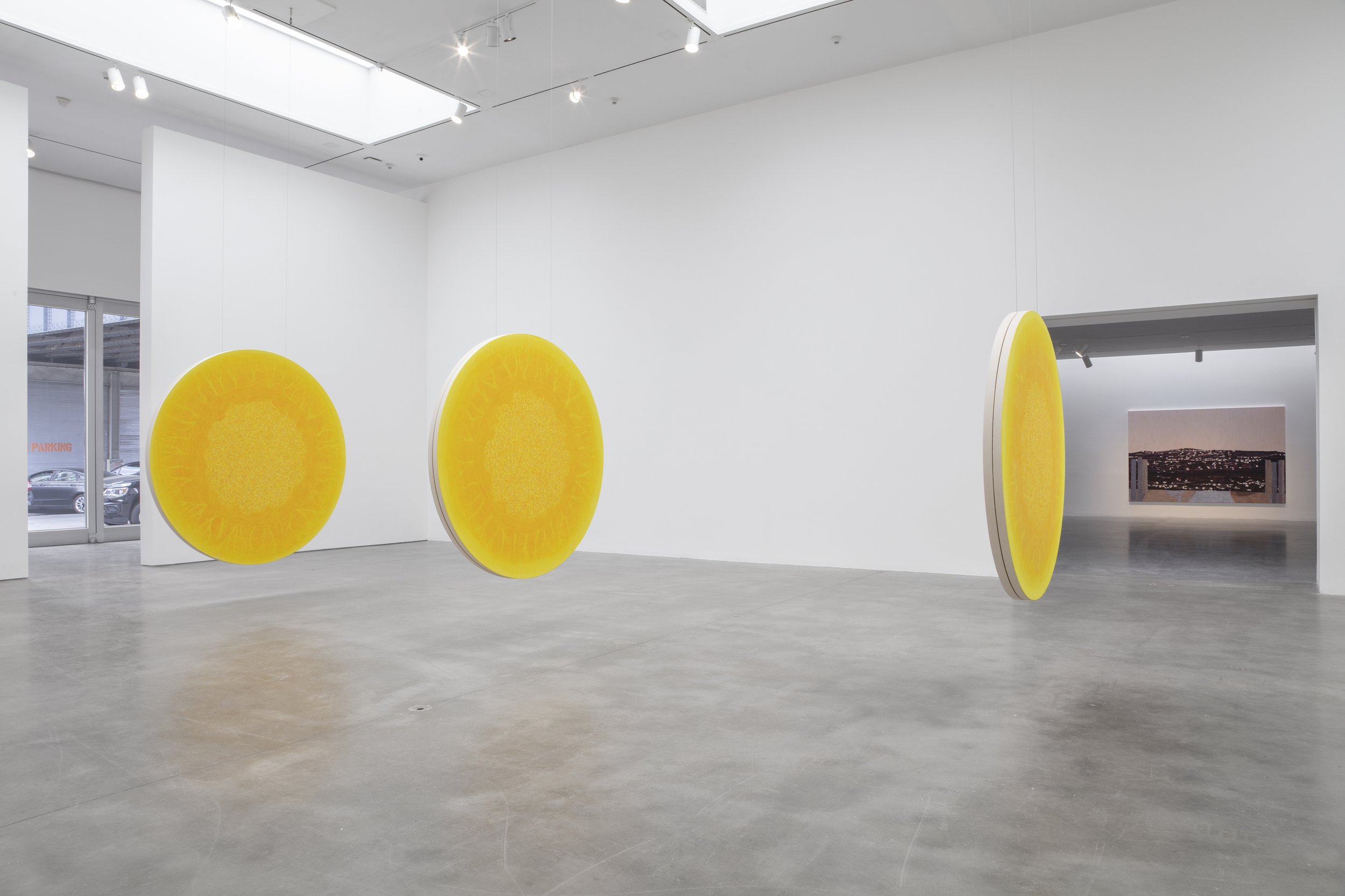
WILLIAM MONK
Curator speaks with the artist about his new exhibition, The Ferryman, at Pace Gallery and GRIMM in New York.
William Monk lives and works in New York. He was awarded the Koninklijke Prijs voor Vrije Schilderkunst (Dutch Royal Award for Painting) in 2005 and the Jerwood Contemporary Painters award in 2009. Monk’s work has been exhibited at Pace Gallery, Hong Kong, and London; Fries Museum, Leeuwarden, Netherlands; Museum Het Valkhof, Nijmegen, Netherlands; Kunstmuseum, The Hague; Van Gogh Museum, Amsterdam; GRIMM, New York and Amsterdam; James Cohan Gallery, New York; Kohn Gallery, Los Angeles; Norwich University, Norwich; PSL, Leeds; and Summerfield Gallery, Cheltenham, London.
Monk’s work can be found in the collections of the Kunstmuseum, The Hague; HE Art Museum, Foshan, China; AkzoNobel Art Foundation, Amsterdam; Roberts Institute of Art, London; Fries Museum, Leeuwarden; ING Art Collection, Amsterdam; Whitworth Art Gallery, University of Manchester, Manchester; and in many private collections.
Congratulations on your new three-venue exhibition at Pace Gallery and GRIMM. Can you share a bit about the work and how the joint shows developed?
I started this new work back in December 2019 in London. The intention was to show it all at Pace’s 510 West 25th Street gallery space the following year. However, when the pandemic hit, I put a pause on it. Pace had asked me to respond to the new situation with a small online show, and I was happy to pause the large work and think smaller. Also, like everyone else, I thought the crisis would not last so long. But after a year, I ended up making three shows that were not part of this body.
In the second year of the pandemic, I resumed this Ferryman work, and since last September, when I returned to New York, I have been focused on finishing the show. The extra time I had meant the group of work grew to the extent that we decided just a few months ago to expand the show across three spaces. Pace NYC and the Hamptons and Grimm gallery NYC. Conceptually it’s worked out well, arranging the paintings around three venues. 510 is a show arranged around the number three. And three is a magic number.
The Ferryman III, 2021-2022, oil on canvas, 86 5/8 x 128 15/16 inches, Pace Gallery
The Ferryman, installation view, Pace Gallery
The Ferryman, installation view, Pace Gallery
The afterlife and spirituality are two key themes in your new drawings and paintings. Have these themes always been of interest to you, or are these a more recent source of inspiration?
They have always been present. But the title of the show brings that more to the surface. And there is of course a literal connection between the idea of the ferryman and ideas about the afterlife. Now that it is more noticeable, I won’t have to be so overt the next time.
Untitled (study for the ferryman I), 2019-2021, oil on canvas, 12.9 x 21.6 inches, GRIMM
Aura II (the ferryman), 2020-2022, oil on canvas, 21.6 x 35.4 inches, GRIMM
Underworld Psychopomp (the ferryman), 2020-2022, oil on canvas, 27.5 x 55.1 inches, GRIMM
Stanley Kubrick is sometimes noted as a touchpoint. I’m curious to learn what strikes you about his films (or process/approach), and how they might inform the work you make?
Twenty-three years ago my degree dissertation was on Stanley Kubrick and Michelangelo Antonioni, comparing them with the painters Mark Rothko and Francis Bacon. That essay really brought down the final mark on my degree, so I’m not sure I want to share my thoughts on that! What I would say is that there is the macro and the micro in life. These filmmakers and artists are interested in those two extremes and nothing in between. And I share that interest.
Nova (deadeye I, II, III), installation view, Pace Gallery
Son (return I), installation view, Pace Gallery
Son (return I, II, III), installation view, Pace Gallery
The pieces in the exhibitions range from small drawings to large tondos. What is the significance of scale, medium, and shape to your process? (in other words, what does one medium/scale allow you to communicate versus another)
Everything is relative. Small is only small if there is something big nearby. Or vice versa. However, that something doesn’t necessarily have to be another painting. We are all conditioned by the size we are ourselves. I think very much about how an individual might be in front of my work. There is also the scale of the room and the space around the work. Space and time are everything. It takes time to take in space. Our eyes will track across a space, a painting or a room or anything. It will track and stop only at a point of contrast. Let that moment be special. Beautiful or disturbing – whatever, but let it not be a waste of our time.
East of Nowhere, installation view, 2021-2022, oil on canvas, 82 11/16 x 124 inches, Pace Gallery
Last question—I always appreciate getting a bit of insight into the life/work balance of the artists I connect with. Can you share a bit about what your typical studio day looks like and perhaps a bit about your life outside the studio, as well?
I have lived in London, Paris, the Alps, Amsterdam, and now New York. Most of that time has been in live-work homes/studios. For the last ten years with my wife and children. Now we live in New York, and I have a separate studio. There are benefits to both, but I like the separation for the moment. I take a city bike to my studio, ten minutes from door to door. I recently bought a record player and lots of records. My best studio days are simply painting and listening to my records. However, most days, there is always some practical thing I must do relating to being a galleried artist. What do I do outside of the studio? These last two years, I’ve made six shows, and there’s been a pandemic. What outside are you talking about?
Interview by Dan Golden
All images © William Monk courtesy Pace Gallery and GRIMM
WILLIAM MONK
The Ferryman
May 27 — June 5, 2022
Pace Gallery
68 Park Place
East Hampton
April 28 — June 4, 2022
April 29 — June 11, 2022
GRIMM
54 White Street
New York
Pace Gallery
510 West 25th Street
New York









